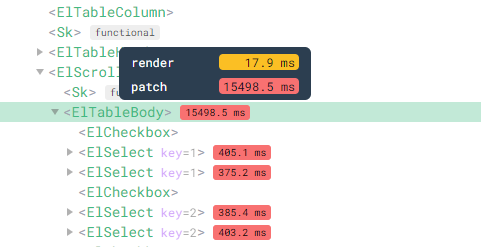To increase the display speed of a dropdown list with the ability to select multiple items inside a table, you can try optimizing the code and implementing various techniques such as virtual scrolling or lazy loading.
Here's an example of how you can optimize the functionality of a table with multi-select elements using Element Plus library:
```html
<template>
<div>
<el-table
:data="tableData"
style="width: 100%"
@selection-change="handleSelectionChange"
>
<el-table-column type="selection"></el-table-column>
<el-table-column prop="name" label="Name"></el-table-column>
<el-table-column prop="age" label="Age"></el-table-column>
</el-table>
</div>
</template>
<script>
export default {
data() {
return {
tableData: [
{ name: "John", age: 20 },
{ name: "Jane", age: 25 },
{ name: "Bob", age: 30 },
// ... more data
],
};
},
methods: {
handleSelectionChange(selection) {
// Handle selection change logic here
},
},
};
</script>
```
In this example, make sure you have imported and registered the necessary components from the Element Plus library. The `el-table` component is used to display the table data with a multi-select column. The `@selection-change` event is used to handle the selection change event, where you can implement your own logic.
To improve performance and avoid glitches when selecting all items in the table, you can consider implementing virtual scrolling or lazy loading techniques. These techniques will allow you to load and render only a subset of data at a time, making the process faster and smoother.
Note: This is just a basic example, and you may need to customize it according to your specific requirements and environment.
